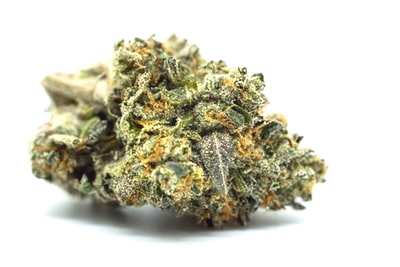Selecting an appropriate cultivation strategy is one of the most critical steps in launching or expanding a cannabis cultivation business. A cultivation strategy dictates how a company will produce its cannabis. This decision can determine a company’s likelihood of success and directly influence its capital and operational expenditures. Selecting an appropriate strategy will result in an efficient and rapid start-up, early market penetration, and avoidance of compliance issues. Unsuitable cultivation strategies can result in unnecessary expenses, a delayed entry to market, and product recalls.
The best way to grow is the most efficient method for producing the highest volume, highest quality cannabis at the lowest cost of production. Unfortunately, there is no universally accepted “best way” to grow cannabis. There are as many different ways of growing as there are growers out there.
This situation is unique in horticulture because most commercially produced crops have a standard method of cultivation. Pick any two countries with a thriving greenhouse industry, and you’ll find similarities in how vegetables, ornamental plants, and cut flowers are commercially cultivated. With cannabis, that’s not the case. Forget about comparing two countries—compare any two cannabis growers, and you’re likely to encounter two very different growing methods, as well as some passionate reasoning behind their choice.
So, what’s an entrepreneur to do? The decision should be driven by three main factors: regulations, climate, and finished product.
Regulations
Regulations sometimes dictate how licensed cultivators can grow their crops. When Canada established a commercial cultivation licensing program in 2013, growers were only allowed to cultivate indoors. For early license applicants, the decision was easy: convert empty warehouse space into state-of-the-art cultivation facilities. Now, eight years later, regulations have expanded to allow licensed Canadian growers to cultivate indoors, outdoors, or in greenhouses.
Regulations can also influence a company’s cultivation strategy by limiting canopy size or plant count. Canopy size is the plant footprint of any cultivation facility. If an operator is licensed for a canopy of 20,000 square feet, they can cultivate as many stock plants, seedlings, or flowering plants as they like, as long as production does not exceed the 20,000 square foot boundary. Plant count limits are much more restrictive. Cultivation businesses that are restricted by plant count are limited to producing a certain number of plants. If the plant count is low, growers are forced to cultivate huge plants to obtain any kind of yield.
If regulations minimize your cultivation options, the decision should be clear. Do what the law allows.
Climate
In the absence of any regulatory prohibitions, the climate can help guide the decision on what is the most appropriate way to grow. In warm regions, most licensed cultivators grow in greenhouses or open fields because the climate most of the year is ideal for cannabis cultivation. Growers in Central and South America can take advantage of year-round warm temperatures and intense solar radiation, which their North American counterparts can only enjoy during the summer months. Most greenhouses in warm regions are simple structures that serve to screen out insects and prevent rain from damaging the crop. Given the climate, constructing an indoor grow facility would not be an appropriate business decision since the ideal growing conditions already exist outside.
Indoor grow facilities and high-tech greenhouses are most appropriate for regions that regularly experience temperature fluctuations outside of 68 – 85oF (20 – 30oC). This includes most of the northern US and some southern states where summers can be brutally hot. Greenhouse growers have various heating and cooling solutions at their disposal to create and maintain optimal growing conditions for their crops.
Constant high humidity should direct entrepreneurs towards growing indoors. Although outdoor temperatures in states like Mississippi may be conducive to growing greenhouse cannabis, prolonged months of high humidity could place flowering crops at an elevated risk for fungal infection. Adequately de-humidifying a greenhouse may prove cost-prohibitive—if not impossible—so growers would need to abandon cannabis flower production during part of the year to avoid costly crop failures. For year-round, perpetual harvests in places like the Deep South, growers should look indoors.
Finished Product
How you grow will also be influenced by what you choose as a final product. If you’re growing cannabis flower that will be displayed at retail, the visual quality will significantly affect price point and consumer selection. Retail cannabis buyers want to purchase dried flower that is clean, compact, and well-manicured. Indoor grow operations and high-tech greenhouses provide the best-looking cannabis flower since growers can closely control the environment, and plants are protected from the outside elements. Crops grown in open fields can be exposed to everything from insects to rain to bird feces, so outdoor growing is not an ideal choice when visual appeal matters.
However, if your final product is an oil extracted from the cannabis flower, the visual quality of the flower is irrelevant because the consumer never sees it. If your extraction lab can successfully refine and eliminate any potential contaminants in the oil, outdoor growing makes good business sense. Large outdoor crops are the most cost-effective way to produce high volumes of cannabis biomass for extraction.
_____________________________________________________________________
Part two of this series will help cultivation businesses decide whether to launch their production facilities using hydroponics, organics, or a hybrid of both.
The post How to Determine the Best Way to Grow: Part One appeared first on Cannabis Business Executive – Cannabis and Marijuana industry news.






